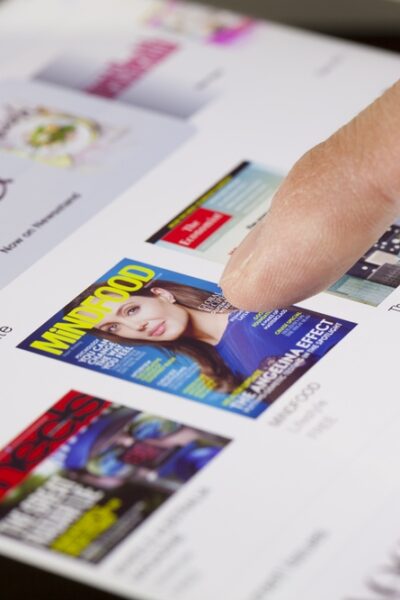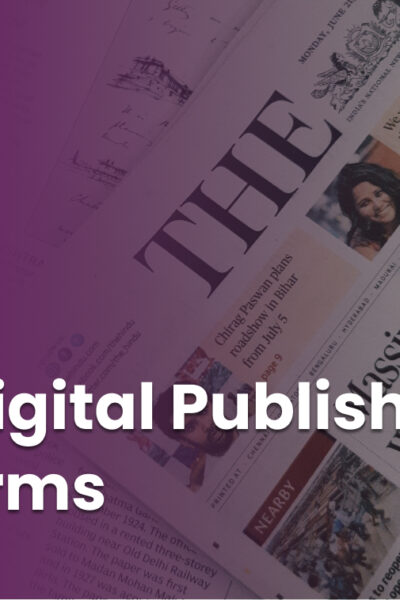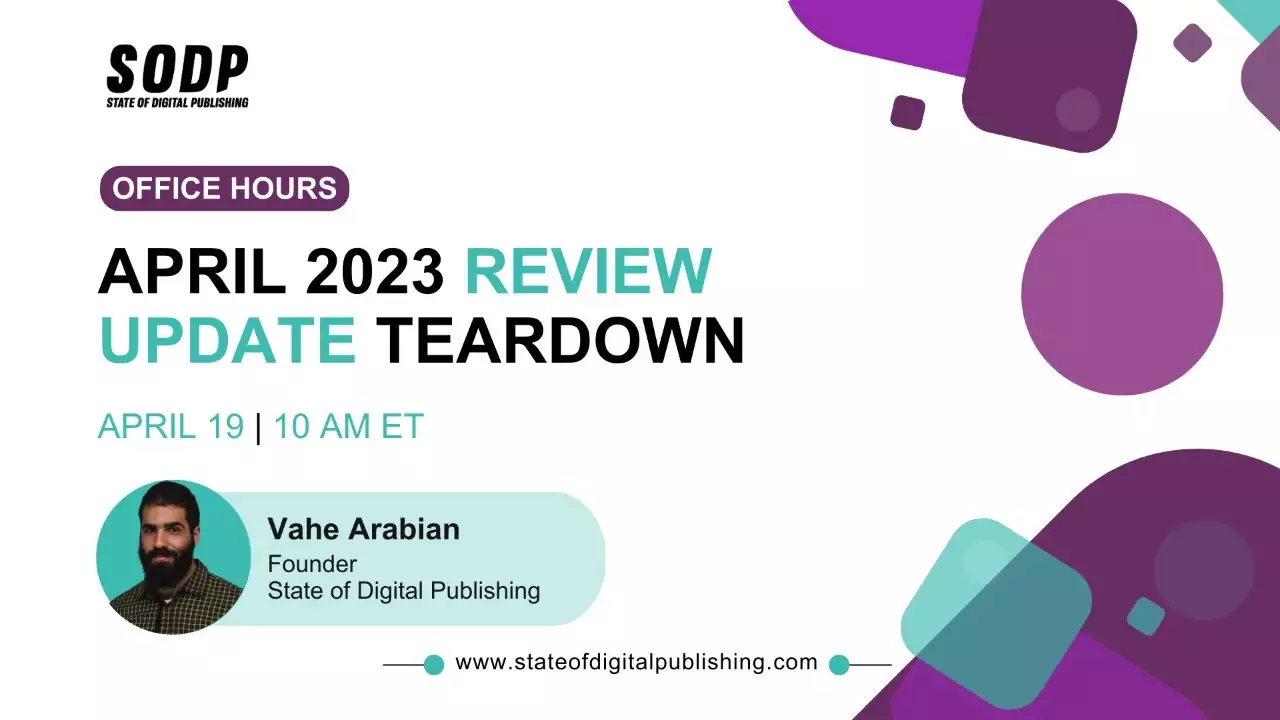It is hard to believe that the history of digital publishing spans more than 30 years.
During this time, publishers have experimented a lot and many attempts have failed. In many cases an editor’s vision has been too far ahead of the technology and the lifestyle needs of the reader.
However, with the rapid rise in use of smartphones and apps, the framework conditions changed fundamentally a few years ago. Media houses have thus reacted to a profound change within the readership.
Figures also show a rapid increase in the consumption of digital magazines. In the UK, for example, the appetite for digital publications even increased by 80% with more than 13 million magazines read.
In this blog, I’ll show you five unbeatable reasons why media organisations today need to publish their print magazine as an app.
- Distribution is easier
- Apps save costs and resources
- Higher reader retention through interactivity
- Apps open up new target groups and revenue sources
- New marketing options through apps
1 Distribution is easier
A nationwide or global distribution of print magazines costs an enormous amount of time and money. After all, magazines first have to find their way to the reader. And this is not an easy task.
Furthermore, the circulation of print publications is very limited. The production and shipping costs determine how many people you can ultimately reach. On the other hand, the huge advantage of digital publishing is that it removes the distribution restrictions of traditional print media.
In the digital world, reaching your readership is much easier. For example, local magazines can digitally reach readers in more remote areas. Or national publications can expand their reach worldwide with little effort.
With the App Store for iPhone and iPad and the Play Store from Google for Android devices, every potential reader has a kiosk literally in his pocket.

An app is loaded at the touch of a finger and the reader is informed about new issues by push notification. In addition, billing is handled directly via the store, whether as a single purchase or subscription. This is not a negligible convenience, in my opinion.
2 Apps save costs and resources
It is obvious that digital distribution by app costs significantly less than that of printed magazines.
After all, what is one of the big advantages of digital publishing? Cost savings, of course. The big advantage: the money saved in printing is now available to you elsewhere.
Just imagine how much money is spent on the production of print editions: paper costs, printing and shipping your magazines. With digital publications, all this no longer plays a role.
A low print volume does not only have a positive effect on costs. Fewer printed copies also mean less use of resources. That means you use fewer tonnes of paper. This ecological aspect is now also an increasingly strong argument for the readership. At this point, younger generations are in particular interested in this debate. Brands are finding that young consumers increasingly want to know how companies deal with the issue of sustainability. And not just since the Friday’s for Future movement.
Publishers who offer their magazines as apps thus also demonstrate a sustainable approach to scarce resources.
3 Greater reader loyalty through interactivity
However, the cost savings potential is only one aspect. Because digital formats offer completely new technical possibilities.
Possibilities that at best lead to an immersive experience of the brand.
Surprisingly, the Alliance of Audited Media (AAM) shows that few publishers have yet benefitted from this trend. According to an AAM study, 73% of publishers still reproduce their print editions exactly.
But what makes the difference when it comes to interactivity?
My answer is audio and video. These two options particularly have the potential to raise articles to a completely different interactive level. In addition, especially the so called generation Z often expects interactive elements in an app.
With the help of links and elements, such as a survey or comments, reading your favourite magazine becomes an active experience for the reader.
This in turn can have a direct influence, for example, on the design of topics or the evaluation of content. On the other hand, you as a publisher have the opportunity to make direct contact with your readership. This strengthens the bond between brand and readers.
From this point of view, an app offers another invaluable advantage. During use, readers reveal a lot about themselves.
This data and information, on the other hand, is just waiting for regular analysis.
Readers not only provide information about which articles they’re interested in. The app usage also reveals, among other things, the time of day at which readers frequently engage with your content, where they are located geographically or how long certain articles are consumed.
This is important information that you can use as a basis for optimising strategies or creating new content and formats.
4 Apps open up new target groups and revenue sources
The smartphone has become an indispensable part of everyday life for many people.
Anyone who succeeds in being constantly present on this little device with its content has the opportunity to reach new reader groups. Target groups that you can no longer reach with a print magazine.
In addition, interactive elements in an app offer opportunities to open up new sales channels. As a publisher, print traditionally generates the highest turnover through advertising. However, app publishing helps you to broaden this horizon.
According to a study by Digital Market Outlook, ePaper and eMagazine revenues will continue to rise to $5.9 billion and $3.3 billion, respectively, in 2020.
Forecast of ePublishing revenues worldwide from 2017 to 2023
Another growth opportunity is to offer featured products directly at the touch of a finger. The publisher thus becomes an affiliate. It wasn’t too long ago that the New York Times acquired The Wirecutter, a product review website, for $30 million. What was the aim? The NYT hoped to benefit from the niche reach and revenue of the affiliate website.
For the sake of completeness, another option for new revenue streams would be to make additional information available for a fee. And you can also market extra ad spaces to advertisers in your app.
The New York Times was able to significantly expand its web and app business last year. In the fourth quarter of 2018, NYT’s digital advertising revenues overtook print advertising for the first time. More specifically, digital advertising revenues rose 23% to $103 million in Q4, while print advertising declined 10% to $88 million.
“We ended 2018 with $709 million in total digital revenue. This means that after just three years, we are already three quarters of the way to achieving our five-year goal of doubling digital revenue to $800 million by 2020.”
Mark Thompson, CEO of The New York Times
5 New marketing options through apps
An app is embedded in the ecosystem of an operating system with all its possibilities.
Share an article from the app with friends on digital networks such as Facebook or Twitter? This also works with a swipe. You’ve automatically increased the chances of growing your reach through social media platforms.
Also, this in turn strengthens the ranking in search engine results. For example, reviews of the app through blogs and users contributes to this. Because every app can also be reached in the web version of the app stores.
How do you recognise strong articles? The best articles are usually those that can be found by readers. And here Google and Facebook are the gatekeepers. Being visible here is still essential for any publisher. An app as well contributes to this.
Last but not least, the app icon on the smartphone screen permanently reminds them of your magazine’s brand. The app is thus more than just another digital touchpoint on the reader’s journey. Ideally, this leads to a deeper connection between reader and brand.
Moreover, from a marketing point of view, an app offers a further, less obvious advantage. App users represent a clearly defined segment among readers. And as such, they can be addressed directly. Be it through niche newsletters with optimised content or personalised push messages on smartphones.
This even gives you the opportunity to create your own community of app readers and address them specifically. By the way, a certain niche newsletter called “Obsession” by Quartz has an opening rate of over 78%. This is significantly higher than the average opening rate for media newsletters, which according to MailChimp is around 22%.
Also interesting in this context: according to Niche Media, the five must-send emails for special interest magazines are weekly roundups, mini-series, announcements, birthday clubs and breaking news alerts.
Conclusion
Are print magazines dead? Certainly not.
What we do know, however, is that digital magazines continue to gain in popularity. Both in Europe and in the USA.
Because, and this is obvious, the migration of your print magazine to an app opens up many new opportunities for you. It is precisely these opportunities that make a decisive difference to the beginnings of digital publishing.
Just a few years ago, the technical possibilities of today were unimaginable. Bulky data carriers were necessary. Readers had to sit rigidly in front of the computer or install software.
So why should you now consider integrating a digital magazine into your content strategy? Firstly, reading habits have changed drastically. Secondly, the advantages now clearly outweigh the disadvantages of the past.
As you know, app is just one valuable distribution channel for your content. Whether Facebook, Twitter, your website or Apple News, there are many more possibilities. With our Purple DS Hub you create content once and distribute and monetise it across all your channels.
Read the original article on purplepublish.com













